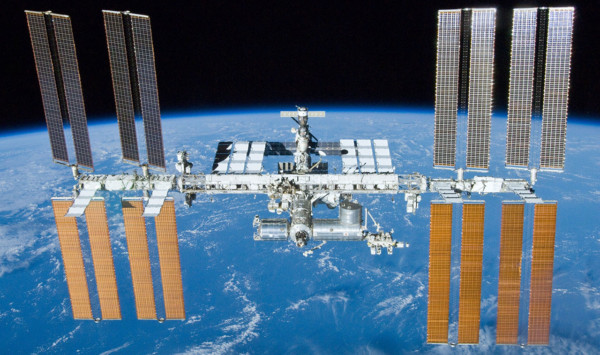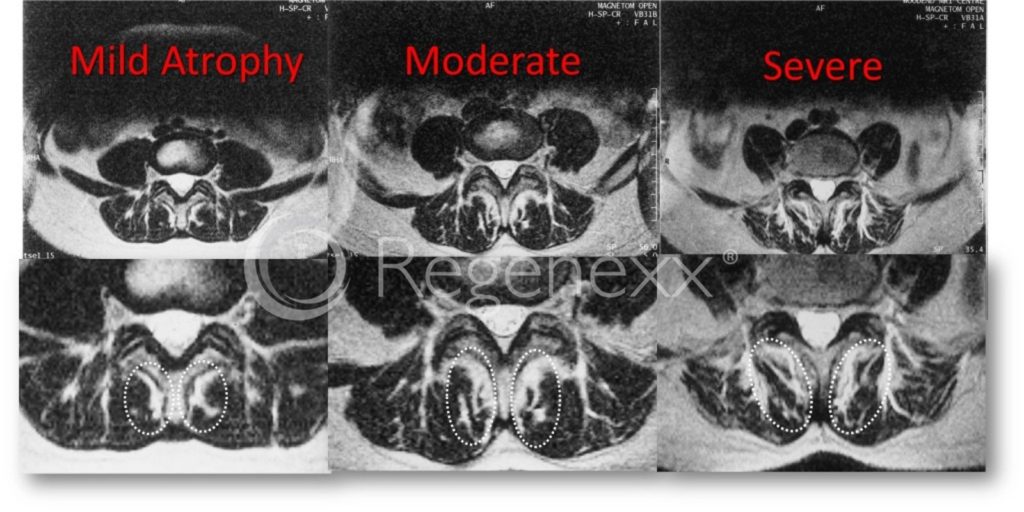Microgravity and the Most Important Low Back Muscle Called Multifidus

The International Space Station. Courtesy NASA
The multifidus is one of those key muscles that you NEED to know about if you have back pain, but you likely have never heard about it. Let’s learn about this muscle, but also look at what happens to it if we remove the earth’s gravity. Let’s dig in.
What is the Multifidus?
Multifidus is a small and deep spinal stabilizer that helps to keep all of our spine bones (vertebrae) aligned as we move. To learn more about it, watch my video below:
Multifidus and Low Back Pain and Your MRI
The most common MRI finding in patients with back pain is atrophy of the multifidus. The means that the muscle that’s supposed to stabilize things has gotten smaller than it should be. This causes instability and pain. However, this critical finding is almost NEVER found on an MRI report!

Your low back MRI has various image slices like sagittal (side view) and axial (top-down view). It also has lots of types of image sequences that will look different. If you look at the axial (top-down) slices on your MRI in the image sequence that looks most like the one above, you’ll see that the dark muscles look like a steak you would buy at the grocery store. Looking at the above image, the amount of white (fat) in that steak defines the level of atrophy. Meaning the more fat in the muscle, the more it’s having problems stabilizing your spine.
The multifidus is the deep muscle in the white dashed oval. So to the left, you see more dark muscles and that’s a steak with little fat. That means that the multifidus is helping the spine protect itself with more active stabilizing. On the far right, we see much more fat in that steak, so that’s severe multifidus atrophy. That muscle is not stabilizing the spine leading to more wear and tear damage over time.
Microgravity and the Multifidus
Muscle atrophy is a big deal on the International Space Station (ISS). Gravity helps us keep our muscles the right size to do what they need to do. In particular, atrophy of the abdominal and multifidus muscles has been observed in astronauts. This causes back pain when they return to mother earth.
In this new study, Julie Hides, one of the world’s experts on the multifidus (MF) and other spinal stabilizing muscles, asked astronauts on the ISS to begin specific exercises to reduce the atrophy of this muscle (1). What happened?
The exercises helped the multifidus atrophy but did not completely prevent the atrophy of this and the abdominal muscles. Many of the observed changes in the multifidus and abdominal muscles that happened paralleled those seen in people with back pain or exposed to prolonged bed rest on Earth. Exercises that the astronauts performed after back on earth fully restored the decreased size and control of the MF and abdominal muscles.
How This Study Impacts Patients on Earth with Back Pain
Patients who have multifidus atrophy need to get that muscle back to stabilize their spine. This study shows that if someone loses that muscle through severe inactivity, the body needs gravity to respond completely to specific exercises to restore muscle function. Hence, getting patients moving again in gravity is key to getting full multifidus function.
In actual back pain patients, it’s a bit more complex. We have found that while many of them can actually get that multifidus muscle back online through only exercises, for some, we need to treat what’s causing the back pain with orthobiologics. For example, if they have an irritated nerve, that needs to be calmed down first. We do that with an epidural injection of the growth factors from their own platelets (platelet lysate). The same happens with other pain generators like painful facet joints, SI joints, or other areas.
The upshot? The multifidus is a very key muscle that’s often forgotten about in back pain patients. How it responds on the ISS and then returns to normal when back on earth is a key thing to understand to help back pain patients here on mother earth.
____________________________________________________
References:
(1) Hides JA, Lambrecht G, Sexton CT, Pruett C, Petersen N, Jaekel P, Rosenberger A, Weerts G. The effects of exposure to microgravity and reconditioning of the lumbar multifidus and anterolateral abdominal muscles: implications for people with LBP. Spine J. 2021 Mar;21(3):477-491. doi: 10.1016/j.spinee.2020.09.006. Epub 2020 Sep 20. PMID: 32966906.

NOTE: This blog post provides general information to help the reader better understand regenerative medicine, musculoskeletal health, and related subjects. All content provided in this blog, website, or any linked materials, including text, graphics, images, patient profiles, outcomes, and information, are not intended and should not be considered or used as a substitute for medical advice, diagnosis, or treatment. Please always consult with a professional and certified healthcare provider to discuss if a treatment is right for you.
